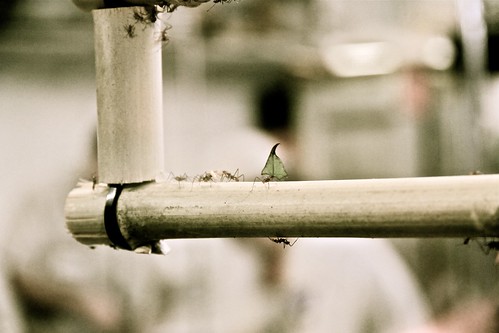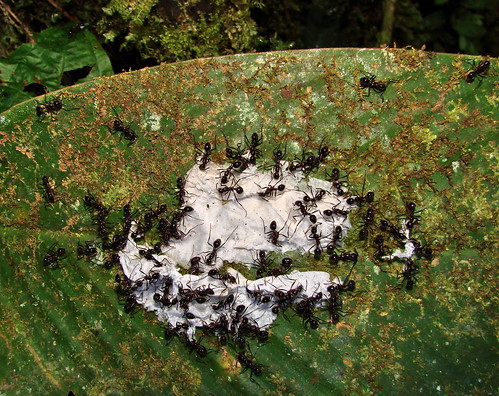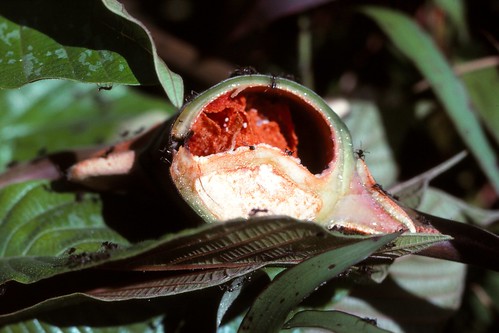After you have been studying wildlife for a year or so, you will have built up your local normal knowledge and may want to go deeper and specialise in one single group of organisms. To do this, the best way is to join a national community and members there will be glad to help you. You may also be lucky and have a local community as well. This is ideal as you can share knowledge, ask for guidance and go on field trips in your local area. However, this does depend on where you live.
There are a whole of factors to consider when specialising. After your first year you will now which organisms appeal to you and you find interesting. It may be an easy option for you. If not, here are some of my observations on what it is like being a naturalist in single specialist areas. They apply to where I live in the Uk.
Mammals

There is a national mammal community and they have local groups that you can join. There aren't too many mammals in the Uk and studying to identify them is fairly easy. The hard part is finding them and there is a greater emphasis on tracking and hunting skills than for other areas. However, those population who like mammals satisfaction in their greater character and personality and you can learn much more about their life cycle and lifestyle than for other animals. Although some surveying is done, the main focus on mammal work is getting involved in conservation, habitat creation and protection of local animals.
Birds
Learning about birds is very easy in the Uk. There are many local groups, with fullness of members and there are many reserves well organised by the Rspb and local wildlife trusts. studying bird identification is fairly easy and there aren't too many birds to learn. You can also do it pretty much anywhere. A great feature of birding is that you're never quite sure what you will see on a field trip, they are full of surprises. On the downside, birds are so beloved that it is difficult to make any new discoveries or see something that person else hasn't seen already. There is the chance for search for work and this is all the time welcome, but if you want to make a honestly critical offering to local and national wildlife, I would suggest that the other areas are much more needy.
Butterflies
Many bird watchers, when wanting to improve their knowledge like to move on to other flying creatures, so butterflies are an determined next step. Butterflies are also ideal for children and beginners. They are fairly easy to spot, there aren't too many to learn, there are some easy ones to identify and some trickier ones as well. The have a intelligent lifestyle and are all the time a satisfaction to see. studying them gives you a great comprehension into conservation and ecology. There are butterfly societies all round the country and you have a great chance to conduce to local and national knowledge.
Moths
From butterflies, moths are a logical next step. There are far more to learn and identification is more difficult. There are also many more micro-moths which are very challenging. Also, their nocturnal lifestyle means that you need to learn how to use light traps. However, surveying s all the time intelligent as you are never sure what you will see and any search for work you do is welcome and makes a real contribution.
Other insects
Dragonflies are beloved and are well known. You can buy good field guides for them and they are intelligent to study. However, you have to learn how to catch them in a net and some identification is tricky.
You an also learn about other insects such as grasshoppers & crickets; ants, bees & wasps; flies, bugs, aphids and beetles. Consideration of these insects is rather distinct to birds, butterflies, flowers etc. Where you can identify what you have seen in the field. studying other insects normally involves trapping, collecting and killing them. The insects then have to be prepared for a microscope slide and many hours of study in your own home is needed to identify them. You also have to build up your own collection of samples for comparison. Field guides exist for some areas, but not others, and keys for identification can be hard to find. However, societies exist to furnish help and retain and you will honestly be able to make new discoveries and make a critical offering to local and national knowledge.
Flowers
Studying wild flowers is very rewarding as there are many distinct flowers to learn and you will all the time see a many of them on a walk in the countryside. Also, their intelligent colours and delicate beauty make them aesthetically pleasing and great subjects for photography. studying identification is a bit daunting as there are 10 times as many plants to learn as birds. Also, some features are a lot more subtle and difficult to see than for birds or mammals, so it can take a long time to become proficient. However, being stationary, you can all the time go back to a plant you have seen and check it out later! There are adequate botanists to cover the country, but more are all the time welcome and there are adequate specialists and local societies to help you, though there is a bias in popularity towards south-east England.
Mosses and liverworts
Mosses are slightly more difficult to identify than flowers and aren't as obviously attractive, but have a determined charm of their own. There are adequate bryologists colse to the country to furnish field trips and give you support. A new field guide has also been produced which makes identification, and retention up with current areas much easier than it used to be. You still need to accumulate samples, though and some microscope skills are required. One advantage of studying mosses and liverworts is that it can be done from late autumn to early spring, when there are few birds or flowers around, so it keeps you interested at a quiet time of the year.
Fungi
Fungi are honestly intelligent and, like birds, you are never quite sure of what you will find on a field trip. You can also study them at a time of year (Autumn/early winter) when other wildlife isn't so abundant. There are thousands to learn, however, and identification is tricky. The lack of a good field guide for the Uk is a definite downer. A key feature of studying fungi, mycology, is that the season is fairly short and you can get out of convention in the spring and summer months. Like studying insects, you go on a field trip to accumulate samples and although some can be identified in the field, a lot of work is one back at home. You without fail need good microscope skills as well as some making ready skills as well. There is something of a shortage of mycologists in the country and more are welcome. Any work you do will without fail make a offering to local and national knowledge.
Lichens
There is a serious shortage of lichenologists in the Uk at the moment. Again, it is the type of study where you accumulate samples in the field and take them home for further study. Some specialist skills are required for identification, but it studying about these organisms and their intelligent lifestyles is fascinating. The Lichen community is the national organisation that will furnish you with help and support.
At the Seaside
Many population go on a trip to the seaside when they are at school and you learn about the intelligent organisms that live there, such as sea anemones, crabs, sea shells and seaweed. studying sea-life is intelligent and gives you the chance of studying organisms in very unusual and intelligent orders, which have unusual lifestyles. There is no determined national community for studying wildlife at the seaside and there is no definitive, in-depth, field guide available. However, joining a local wildlife trust will help you to learn where the best sites are and introduce you to local experts. Alternatively, you can go on a policy run by the Field Studies Council and they will teach you some identification skills. Overall, though, this is an area that you learn in the field, from another person, rather than by reading books.
Summary
· Do you like to identify what you have seen right away? Birds, butterflies, flowers and seaside animals are the best areas for this.
· Do you like to sit still and search for habits, characters and life-styles? Mammals and birds are good areas good for you.
· Do you like to learn about tracking and hunting? Again, mammals and birds are the best for this.
· Do you like to go on walks and record the wildlife that you see? Birds, flowers and butterflies are the best to study this way.
· Do you want to study an area where there are only a few organisms to learn? Mammals, butterflies, ferns, grasshoppers, bumble bees and seaweeds are some areas you could consider.
· Do you want to get involved in an area with thousands of organisms and new ones being discovered all the time? Fungi and many of the insect orders such as bees, flies, bugs and moths are recommended. For the greatest challenge, you might want to consider parasitic wasps!
· Do you like to produce lists of all that you have seen and do search for work? Then flowers, insects and fungi fit in well with this practice.
· Do you like to accumulate samples and search for them at your free time back at home, normally with a microscope? Then insects, mosses, fungi and lichens are studied this way.
I have given a brief overview of the distinct areas of wildlife, so I hope it has given you some ideas and pointed you in the right direction.
Specialising in dissimilar Areas of Wildlife
Fernando Torres Fan Club News Blog Printer USB Cables RCA To USB Cables











